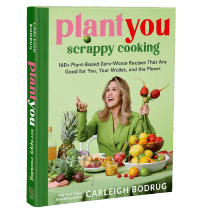How To Ferment Vegetables
In this article, we are sharing how to ferment vegetables and the benefits that are included when adding fermented foods to your plant-based diet.
Many of our favourite plant-based foods are fermented, such as cashew cheeses, sourdough bread, vegan kimchi, sauerkraut, sour pickles and tangy fermented vegetables. Fermented food complements a variety of our favourite dishes and are a delicious garnish as well!
Fermenting is surprisingly simple when it comes to vegetables. Still, you can surely find the more complex fermenting processes when it comes to a bold fermented cashew cheese recipe or tedious sourdoughs.
The fermenting process is unique and will quickly become a household favourite as a topping, garnish or delicious addition to many plant-based meals.
Fermented foods have health benefits! The benefits include being an amazing source of healthy probiotics and prebiotic bacteria, eases digestion and allows nutrients to become more bioavailable. A healthy microbiome helps keep your gut bacteria balanced and protects against pathogenic bacteria. With that being said, fermented food is good for the gut!
What are Prebiotics?
Prebiotics are the fermentable fibre that is naturally available in vegetables and fruits. For example, onion, bananas, artichokes, asparagus and onions. Prebiotics are important for nourishing the gut with beneficial bacteria.
What are Probiotics?
Probiotics are live bacteria that are full of health benefits when consumed. They are helpful to have in your diet to promote a healthy microbiome and are encouraged for people that experience digestion issues.
How to Ferment Vegetables
Lacto Fermentation is lactobacillus, which is healthy bacteria and has nothing to do with dairy! We are talking about lactic acid, and it prevents unhealthy bacteria from growing and preserves your vegetables. It is also what gives your delicious fermented veggies an excellent tangy and sour taste! Traditionally fermenting vegetables were done seasonally to keep preserved when a vegetable was out of season.
In true Plant You fashion, lacto-fermented vegetables are simple to make right at home.
Fermenting vegetables does take more time so if you want that delicious tangy vinegar taste without the added wait just head over to our article on how to pickle your vegetables. We give you a step by step rundown of everything you need to know when it comes to pickling your vegetables.
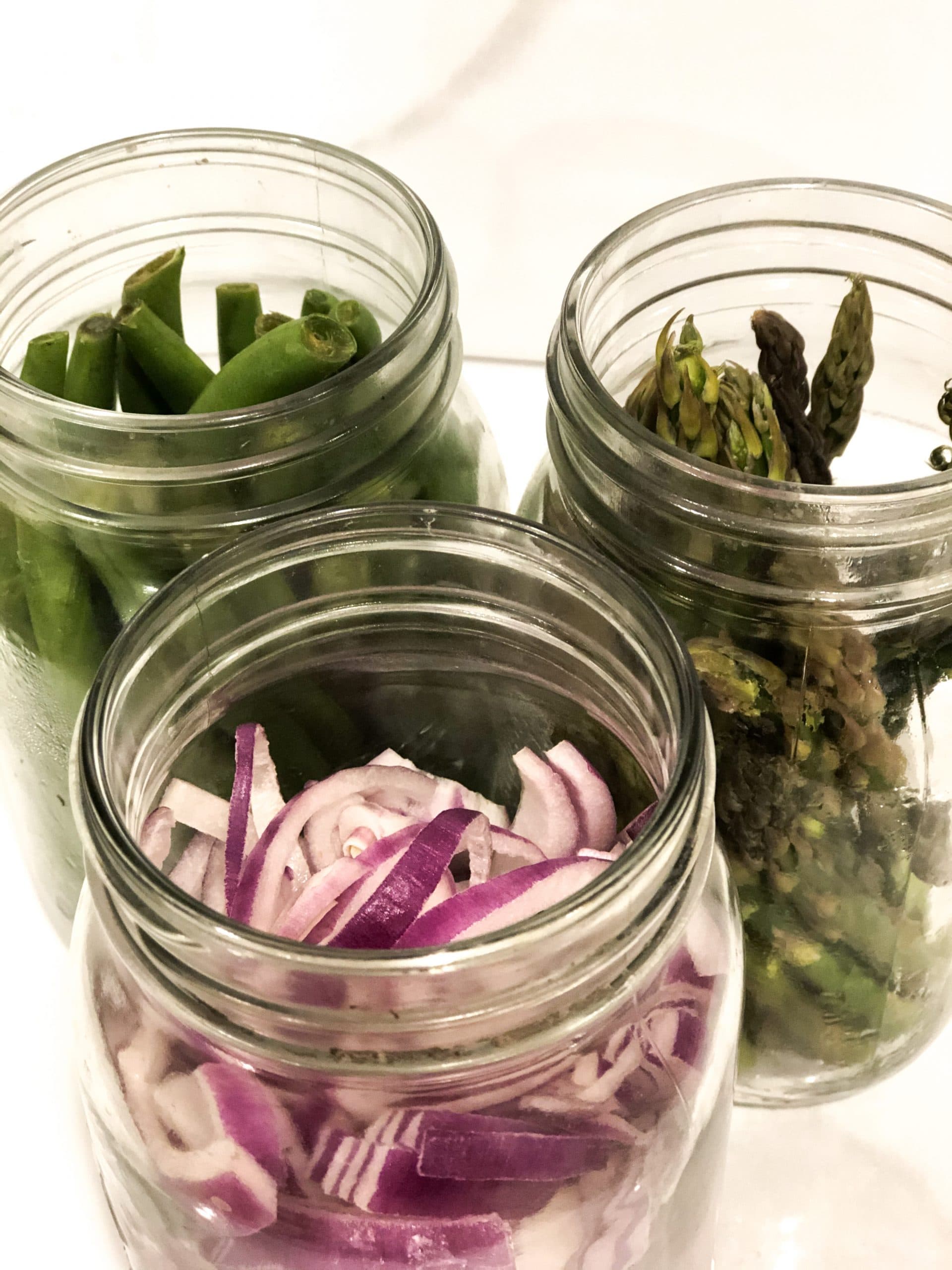
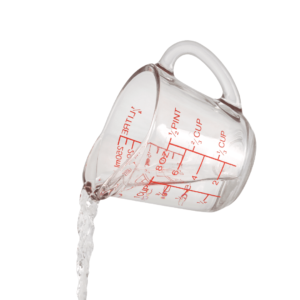
The Recipe: Vegetable Brine
Ingredients
- 6 tbsp Sea Salt or Rock Salt
- 9.5 cups Filtered Water
Instructions
- Combine your ingredients and stir till the salt is dissolved. Once recipe is complete keep the brine in a sealed jar in a cool place for up to 3 months.
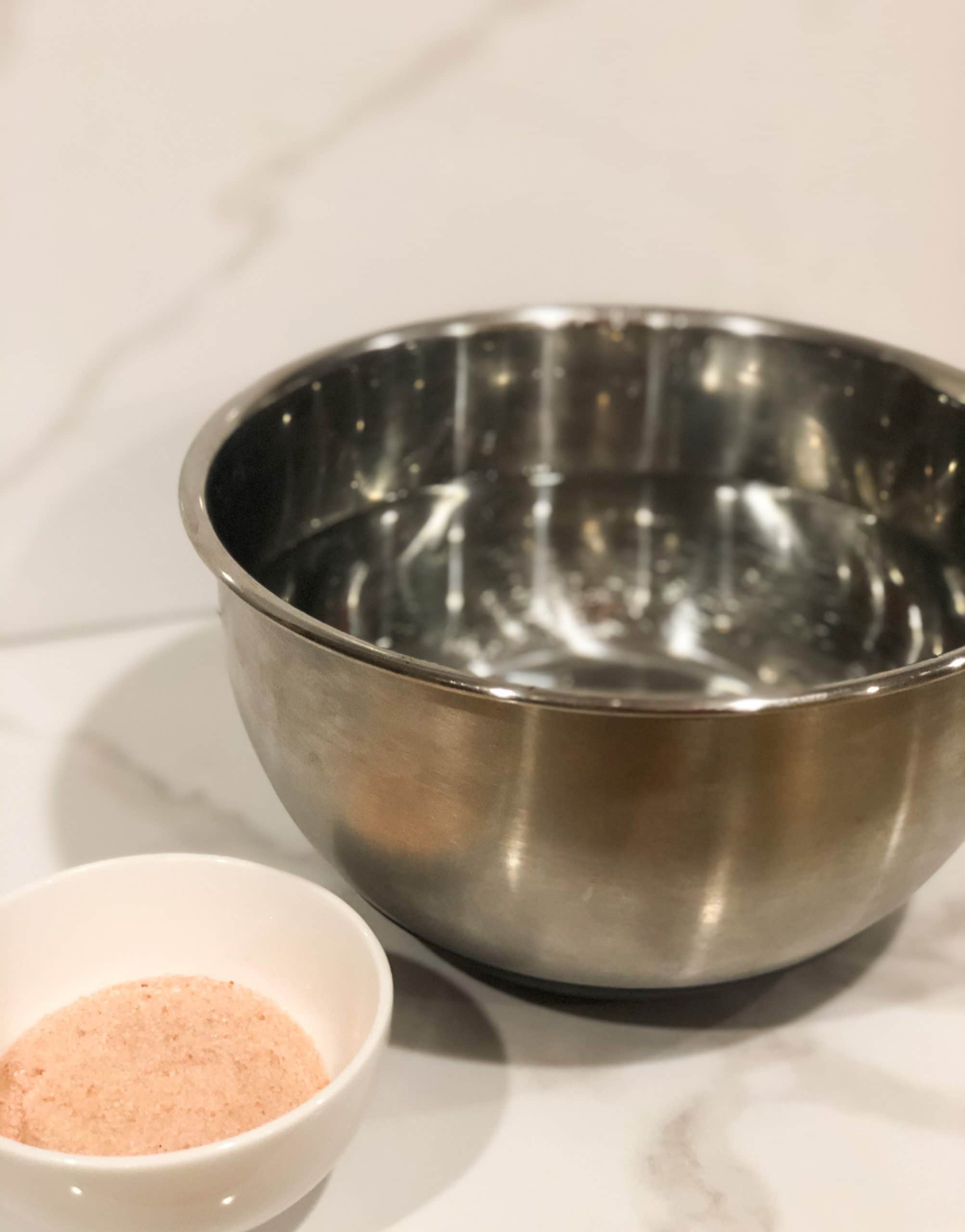
Our Favourite Vegetables to Ferment
- Green beans
- Asparagus
- Cauliflower
- Carrots
- Onions
- Radishes
- Pickling Cucumbers
- Bell Peppers
- Garlic
Follow our simple fermented vegetable recipe and enjoy your veggies is a matter of a few days!
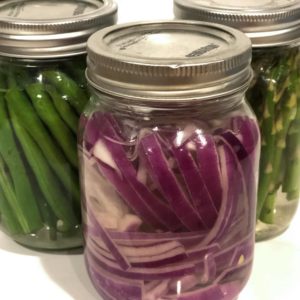
The Recipe: Fermented Vegetables Recipe
Ingredients
- Firm Veggies of Choice , cut, washed, steamed or peeled
- 1-2 tbsp Seasoning of Choice , per jar
- 1-2 cups Vegetable Brine , per jar – referred to brine recipe
Equipment
- Kliner Jar or Mason Jar
Instructions
- Insert your desired vegetables into the jar.
- Leave a 1½ inche space at the top of the jar.
- Add seasoning of your choice.
- Pour your brine over the vegetables leaving 1 inch space at the top of the jar.
- Place a weight or smaller jar over top to keep the vegetables semerged.
- Cover the jar with cheesecloth or use a fitted lid and will release the gases every few days. Store in a warm place.
- Taste the vegetables once you reach the 2nd or 3rd day of the process.
- Remove the weight once the flavour you desire is reached. Maximum. 5-10 days. Secure the jar once the taste reaches your liking and store in your fridge.
The Best Type Of Salt To Use For Fermenting
Salt is a very important part of the fermenting process. This will allow the flavour to develop and help the growth of healthy bacteria. The best type of salt to use would be unrefined sea salt, rock salt or both! You can go for a spectrum of colours when it comes to the added minerals for, example, grey, pink or black!
Why Salt Is Used…
The fermentation process needs salt!
- Salt provides a protective boundary to ward of any unwanted or harmful microbes
- Keeps your vegetables tasting crisp
- To prevent mould
- Enhances the taste
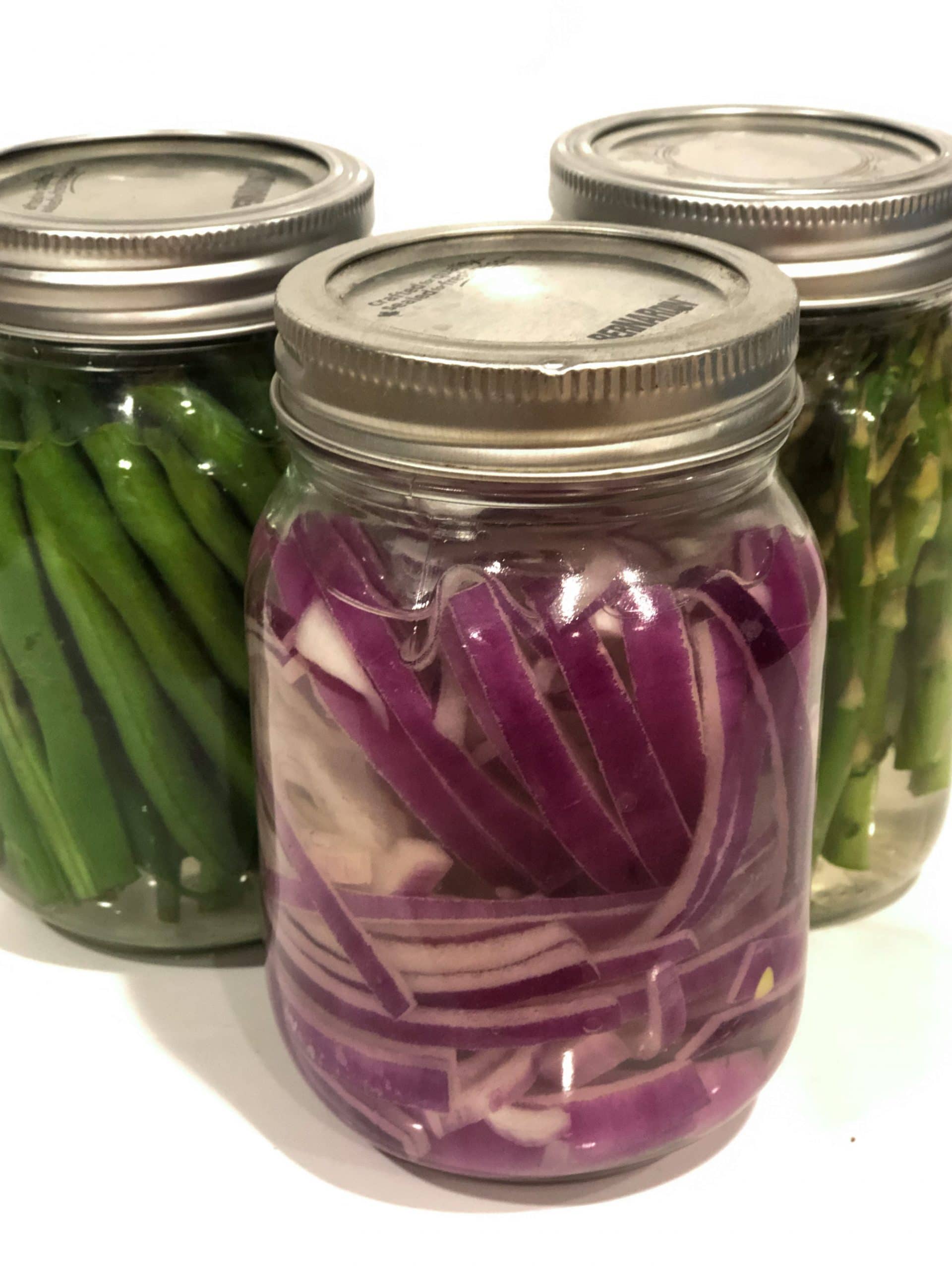
Our Favourite Fermented Vegetable Recipes
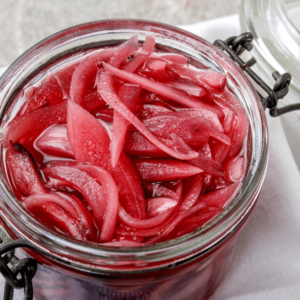
The Recipe: Fermented Red Onion
Ingredients
- 3 cups Red Onion , chopped
- 1 tsp Black Peppercorn
- 1 Bay Leaf
- 2 Garlic Cloves
- Vegetable Brine, refer to above recipe
Equipment
- Mason or Kilner Jar
Instructions
- Add your spices and garlic to each jar.
- Insert your red onion in the jars and pour with brine leaving space at the top.
- Cover with cheesecloth or fitted lid (release gases every few days) and leave to flavour desired is reach in 3-10 days. Once flavour is reached seal and store in refrigerator.

The Recipe: Fermented Green Beans
Ingredients
- 1 tsp Chili Flakes
- 1 tsp Mustard Seeds
- 3 Garlic Cloves
- 3½ cups Green Beans , steamed and washed
- Vegetable Brine , refer to brine recipe above
Equipment
- Mason or Kilner Jar
Instructions
- Insert green beans into jar and cover with brine.
- Ensure you leave a 1½ inch space at the top of your jar.
- Cover with a cheesecloth or fitted lid (release gases every few days) and leave in a warm place to ferment. Once desired flavour is acheived in 3-5 days. Seal and store in a cool place.
More Benefits of Including Fermented Vegetables In Your Plant-Based Diet
- Fermented foods stocked in your pantry are exceptionally budget-friendly. Fermenting extending the shelf life in a good way and has been around for a long-time to preserve food.
- It not just about healthy bacteria! Fermenting increasing the availability of the vitamins that are present in the vegetables you’ve fermented.
- Saves money! Fermenting your vegetables is extremely energy efficient since it includes limited cooking or refrigeration. This means saving money even when it comes to your energy bill. Also, not to mention vegetables themselves are quite affordable.
- It brings people together! Fermenting is a fun activity in the kitchen; you can get the whole family involved in.
Add Fermented Vegetables To These Plant You Recipes
Easy Vegan Balsamic Potato Salad
Vegan Baked Beans and Potato Hash
Stay on Track With Your Healthy Lifestyle By Joining The Plant Ahead Program
Our weekly whole-food plant-based meal plans make life so much easier! You will quickly see the benefits as soon as you join. When becoming a member of Plant Ahead you will gain access to our database of plant-based meal plans + a new plan each week, shopping list, e-books and an invite to our Facebook support community. Our proven plant-based program cost less than a MOVIE TICKET.
Join The Plant Ahead Program today for only $7.99/monthly!
[maxbutton id=”1″ ]

